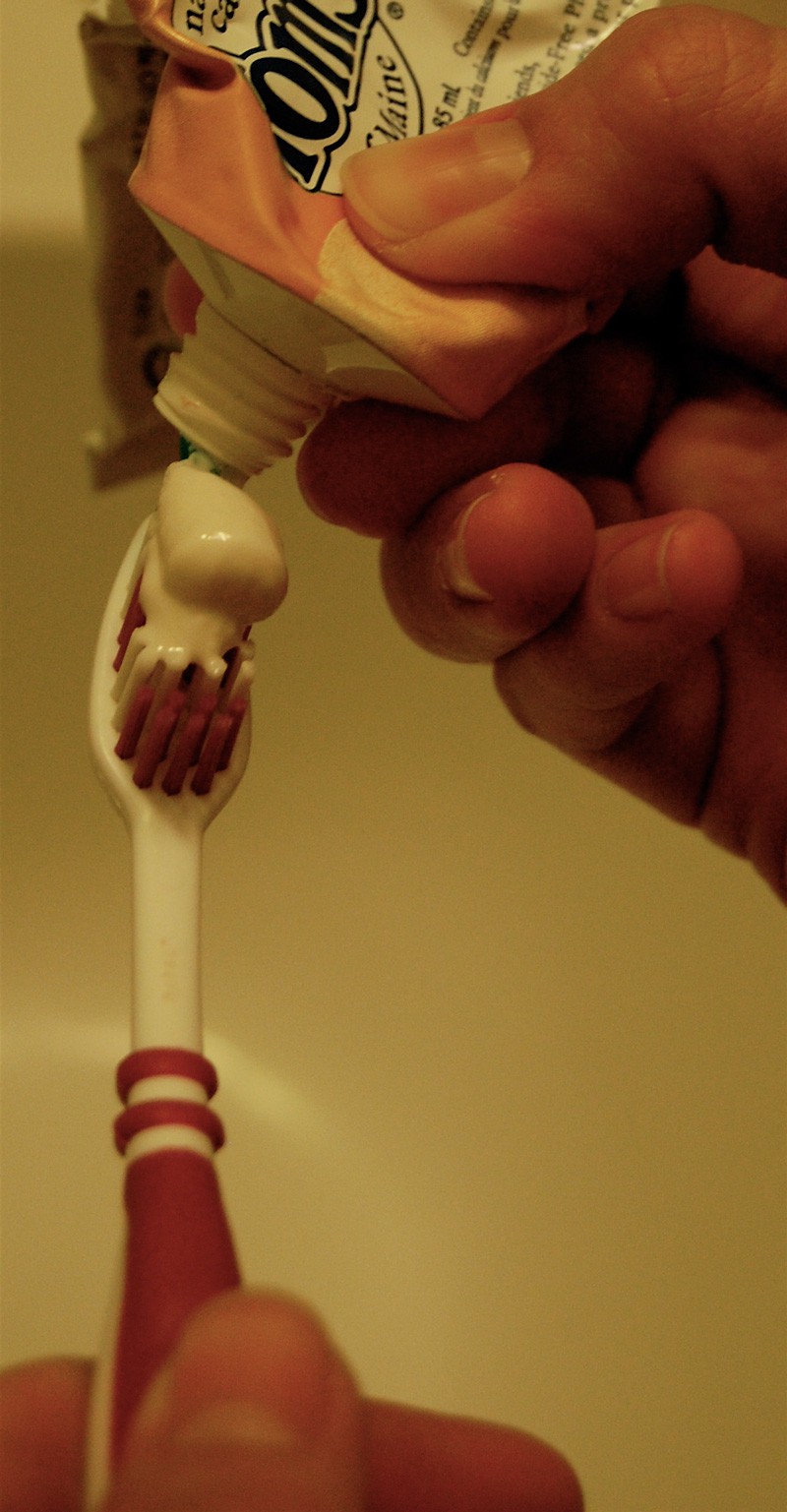
On January 3 of this year, Environmental Defence released a surprising and troubling report entitled Toxic Nation on Parliament Hill. The report detailed how four prominent MPs were carrying around a significant toxic burden—the build-up of chemicals that accumulate in our blood and tissues over a lifetime. About six months earlier, Environmental Defence had invited MPs Jack Layton, Tony Clement, Rona Ambrose, and John Godfrey to have their blood tested to find out what environmental pollutants were coursing through their bodies.
The toxic load carried by each of the MPs was startling. Tests found they all had higher-than-normal levels of pollutants in their bodies. All had higher-than-average levels of mercury in their blood. Ms. Ambrose, the then-Environment Minister, was found to have the highest arsenic levels of the group; Mr Godfrey, the Liberal environment critic, had the highest levels of organophosphate pesticides in his body.
These findings surprised both the test subjects and the general public. Dr. Rick Smith, Executive Director of Environmental Defence, notes that people who live healthy lifestyles, eating right and exercising, are nevertheless exposed, daily, to dangerous and harmful chemicals. A growing number of Canadians are taking the toxic threat seriously, but most lack the information to make informed decisions about what products they put in and on their bodies.
People are turning more and more to products that make them feel safe, particularly items that are free of the industrial chemicals found in conventional products. As a consequence, grocery and drug store shelves are increasingly stocked with products advertised as “natural”—though “natural,” in the hands of the cosmetic and agrifood industries, turns out to be an extremely malleable term. Unlike the term “organic,” which may only be stamped on items that have been certified by an accredited board, the term “natural” may be used on any product on the market: there are no governing bodies to regulate what is “natural” and what is not. Without government regulation, the cleansing of the personal care industry will remain merely cosmetic.
Because the demand for natural and organic products has grown so rapidly, “naturals” have become an industry in their own right. Once upon a time, only small mom-and-pop operations that conjured up images of bead curtains and the scent of patchouli sold “natural” products. But the former niche market has hit the mainstream. Now, soccer moms are buying homeopathic remedies for their kids. According to Nutrition Business Journal, the natural personal care industry in the U.S. grew by 8.7 percent in 2003 and 11.3 percent in 2004. (This growth is particularly noteworthy when compared to the feeble 0.1 percent growth rate experienced by the top ten U.S. supermarket chains during 2003-2004.) Big-name stores are now jumping on the bandwagon, scrambling to meet the demand. Loblaws has launched the PC Organics brand, which now boasts a large and successful line of products. The Sobeys brand has gone one better and acquired the Québec-based Rachelle-Bery health store chain, which markets “natural” products to high-end customers.
But does this shift in the corporate winds mean we’ll be exposed to fewer toxins? Not necessarily.
It’s industrial and agricultural pollution that accounts for a significant portion of our toxic exposure, something individual purchasing decisions can’t defend us from. Dr. Joseph Mercola, author of Total Health Program, has created a top ten list of the most prevalent toxins in our air, water, and food supply. Seven of the ten are chemical compounds emitted by industrial polluters. Unless individual consumer choices are accompanied by concerted pressure to strengthen the regulations governing polluters, the toxins we carry in our bodies will continue to accumulate in greater and greater concentrations.

That said, the first place many people will exercise their newfound concern with toxic exposure is through their consumer choices. Consumers of “natural” products, whether personal care products or food items, are making choices based on the environment as well as their personal health. “Natural,” it is assumed, will deliver “healthy.”
But there is no guarantee that a product that is labelled “natural” will, in fact, be composed exclusively of non-toxic ingredients. Because there are no regulatory bodies to ensure reliable standards, the only remedy is to read the labels carefully and learn to recognize the multisyllabic monikers by which toxic substances are known.
Currently, little testing has been done on the long-term dangers of substances found in personal care products. What testing has been done can at least point us to a few substances that conscientious consumers may want to avoid.
Phthalates are a group of chemical compounds that increase elasticity, especially in hair care products. They’re also used to extend the scent release of perfumes and to disperse fragrances. When a product lists “parfum” or “fragrance” as an ingredient, it may contain phthalates. Studies have linked fetal exposure to phthalates to developmental damage, both in human and animal testing, and damage to the reproductive organs of adult animals. The European Union classifies phthalates as reproductive toxins, and prohibits them from use in cosmetics.
Another group of chemicals ubiquitous in personal care products is the parabens group. Parabens are generally used as preservatives in personal care products. The most common parabens are methylparaben, ethylparaben, and propylparaben. Parabens are relatively cheap and widely used, especially in moisturizers, creams, and lotions. According to the Environmental Working Group, a U.S. non-profit organization of scientists, engineers, policy experts, and lawyers, parabens have been shown to disrupt endocrine (hormone) function, among other potential concerns. EWG indicates that there are significant data gaps in assessing the safety of parabens, with a lack of basic toxicity studies.
Dr. Philippa Darbre, whose research has pointed to a link between parabens and breast cancer, acknowledges that there is not enough research to definitively condemn many of the substances found in personal care products. The link between parabens and cancer is still tenuous, given that Darbre’s findings are recent and have not been followed up. That’s why she has called for further research into the paraben-cancer link, in the hopes of finding out more. However, she has found it difficult to secure funding for such research despite her 20 years of experience in the oncology field. It was only thanks to friends and colleagues who rallied and gained her access to machinery and breast tissue that Dr. Darbre’s research was able to proceed. It would seem that as far as the personal care industry is concerned, chemicals are innocent until proven guilty.
The personal care industry dismisses toxicity reports as inconclusive. The U.S.-based Cosmetic, Toiletry, and Fragrance Association (CTFA) addressed the Darbre findings by stating that parabens “have been used in a wide variety of foods, drugs, and cosmetics and keep products safe. Parabens have a long history of use in these products,” and are thus assumed to be safe.
Health Canada’s response so far has been tentative at best. The Food and Drug Act contains a mere paragraph on personal care or cosmetic products, most of which deals with standards of sanitation in the preparation of the products. There are no laws governing testing for long-term safety. Instead, Health Canada’s website recommends patch testing. Basically, what they want is for the consumer to buy the product and try it. If anything bad happens, like a rash, vomiting, or dizziness, the consumer is advised to stop using it.
This approach does nothing, however, to determine the potential effects of long-term, low-level exposure to a toxin.
Some small progress has recently been made, however. As of November 18, 2006, Health Canada requires that all cosmetics must carry labels listing the ingredients, much like the ingredients lists found on food products. Just as many individuals check labels for monosodium glutamate in their foods because they know they have an intolerance, now they may check the labels of their favourite personal care products to avoid potentially toxic substances.
Now that the cosmetics industry must label each ingredient, it is much easier to find out what we’re putting on and into our bodies. What’s striking is that potentially harmful ingredients are found in so-called natural care products, the very products health-conscious individuals buy to protect themselves.
For example, the “naturals” cosmetic company Kiss My Face advertises itself as “obsessively natural” and sells its products in natural food stores. It offers a line of organics, some of which are clearly advertised as paraben-free. This very same company, however, has a children’s line of personal care products, Kiss Kids, that contains parabens; the labels indicate as much. Another company, Alba, whose tag line is “beautifully, healthfully, individually you,” can be found in natural health food stores and contains some organic ingredients. Yet Alba products contain both parabens and “botanical fragrance,” whose composition is not clearly spelled out. The Healing Garden’s products, marketed as organic, contain both parabens and “fragrance (parfum).”
Of course, if used sparingly and individually, these chemicals may very well be harmless in the short term. The real risk arises when these products are used in combination and over long periods of time. It is estimated that more than 25 percent of women in North America use at least 15 personal care products daily, and each of these products is designed to remain on the skin for long periods of time. Furthermore, we use personal care products over the course of our lifetime; and the cumulative effect of long-term exposure to these chemical compounds is still unknown.
In the face of all this, the “naturals” industry remains divided. Some companies have gone paraben-free. Others have some product lines that are free of possible carcinogens and others that are not. And yet other companies dismiss the fears and continue to advertise themselves as “natural” alternatives, all the while putting out products that contain parabens and possibly phthalates under the guise of “fragrance.”
Where do health food stores fit into all this? They, after all, stake their claim on the healthiness of natural products, and many consumers turn to them for healthy options.
The manager of one small chain in Ottawa admits that her stock is first and foremost customer-driven; if enough customers ask for a product, she’ll stock it. She indicates, however, that she looks into the ingredients to make sure that the product is “clean” and appropriate for her store. Other owners and managers of health food stores act similarly, but nuance their approach. Michael Kalmanovitch, founder and owner of Earth’s General Store in Edmonton, offers healthier alternatives to conventional products found in pharmacies. He also believes his role is to educate the consumer. He points out, however, that in the world of personal care products, as in anything else, the rule is “buyer beware.”
What this means is that for now, consumers of these personal care products must be wary and wise, as they are left ultimately responsible for their own health. Health Canada will protect only from immediate harm since the long-term effects, until proven conclusively, will remain under its radar. And proving that something is harmful becomes increasingly difficult with university laboratories relying heavily on corporate funding for research. As for the “naturals” industry, the companies by and large obey the bottom line: if a product seems safe and customers continue to buy, the companies will continue to produce. No certification boards exist to affix a stamp of approval on “natural” products.
So what is a health-conscious individual to do? Thanks to Health Canada’s new labelling rules, consumers can read the labels carefully to make sure their products are free of parabens and “fragrance,” and can conduct their own research using Environmental Working Group’s “Skin Deep” online database of cosmetic safety, www.cosmeticsdatabase.com. Armed with knowledge and keen eyesight, consumers now at least have the opportunity to read the labels and vote with their wallets.
Without the intervention of some regulatory body, that’s about as good as it gets.
Cristina Bianchi-Melchin is a mother and freelance editor/proofreader who works from her home in Montreal. She is an avid shampoo bottle reader.




_780_520_90_s_c1.jpg)

